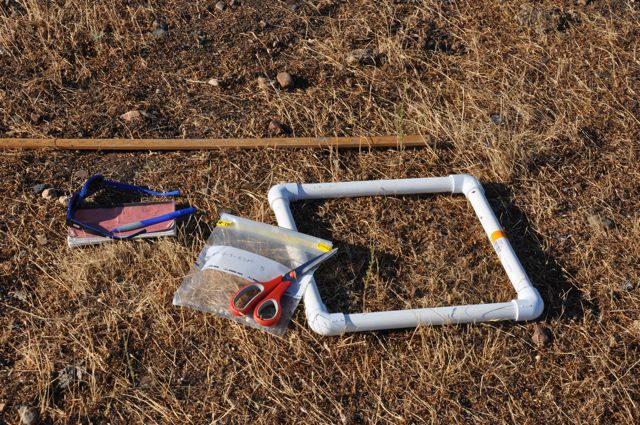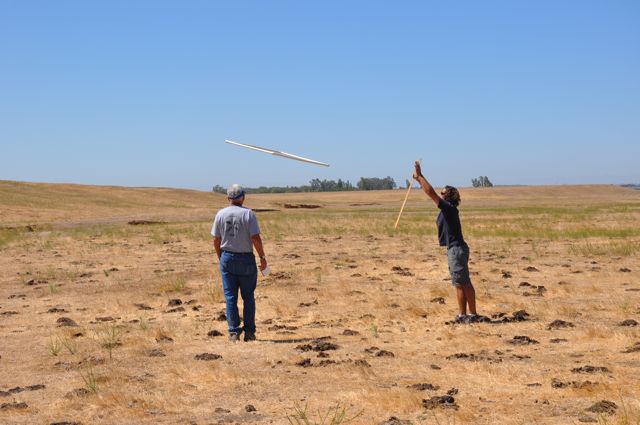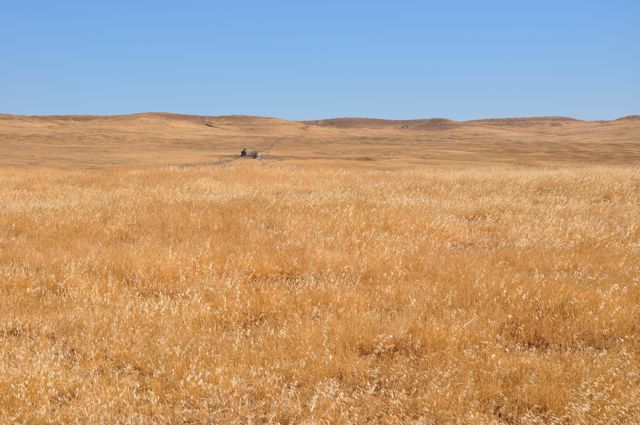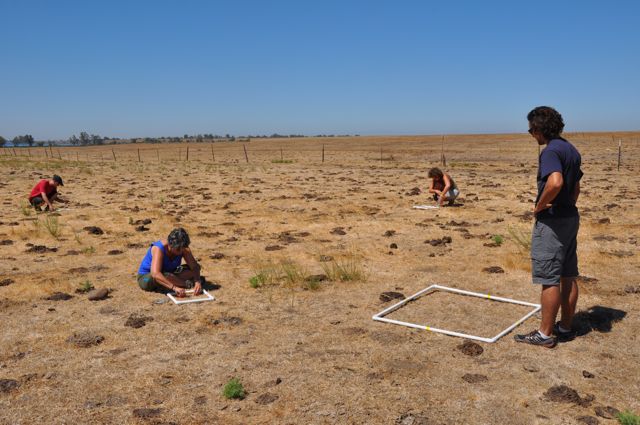By Chris Swarth
August 15, 2013
RDM is short for Residual Dry Matter. RDM describes a simple method of assessing cattle grazing pressure on grasslands by the standard clipping of a small sample of dried grass and weighing the sample on an analytical balance. As of mid August we have now collected about 40 triplicate samples of RDM from across the Reserve for analysis in the Fogel lab on campus. RDM describes the dried grass that remains standing in summer, after t he cattle have been moved off a grazing area. RDM becomes a rough estimate of the forage that remains and it indicates the potential for erosion in the fall. It is also a measure of the grazing intensity. Too little RDM could suggest that too many cattle are grazing for too long in one place. Ranchers move their cattle around to reduce over grazing.
he cattle have been moved off a grazing area. RDM becomes a rough estimate of the forage that remains and it indicates the potential for erosion in the fall. It is also a measure of the grazing intensity. Too little RDM could suggest that too many cattle are grazing for too long in one place. Ranchers move their cattle around to reduce over grazing.
The US Fish and Wildlife Service requires the university to assess grazing intensity on the Reserve lands.
Our RDM team consists of Marilyn Fogel, David Araiza, Jordan Stratford and Chris Swarth. We’ve collected samples on July 9, 10, and 31, and August 1, and 15.
The protocol is simple: place a one square foot quadrat sampler on a randomly-selected area of grass, clip all the standing dried vegetation in the sampling quadrat to a level flush with the ground, and place the clipped vegetation in a bag. Do this again and again, and we begin to understand the levels of grazing taking place. RDM is the method of choice for range managers and it is required that we do this on the campus reserve.
We have augmented the RDM method by making measurements of the height of the dried grass, and by taking soil samples. Soils are analyzed for carbon and nitrogen concentrations – another window in to catt le grazing as well as helping us to learn more about the various soils found here. We also make a qualitative assessment of our sampling sites in which we describe the microhabitat, slope, elevation and general condition of the land and we record the latitude and longitude of each site.
le grazing as well as helping us to learn more about the various soils found here. We also make a qualitative assessment of our sampling sites in which we describe the microhabitat, slope, elevation and general condition of the land and we record the latitude and longitude of each site.
The Reserve is grazed by about 1,600 head of cattle. Grazing is a traditional use of the land and vernal  pool experts have determined that grazing is beneficial to the maintenance and ecological health of vernal pools. However, the mantra “grazing is good” has not been rigorously tested. We plan to continue our studies in order to understand more about grazing and the impacts it could have on the Reserve.
pool experts have determined that grazing is beneficial to the maintenance and ecological health of vernal pools. However, the mantra “grazing is good” has not been rigorously tested. We plan to continue our studies in order to understand more about grazing and the impacts it could have on the Reserve.


